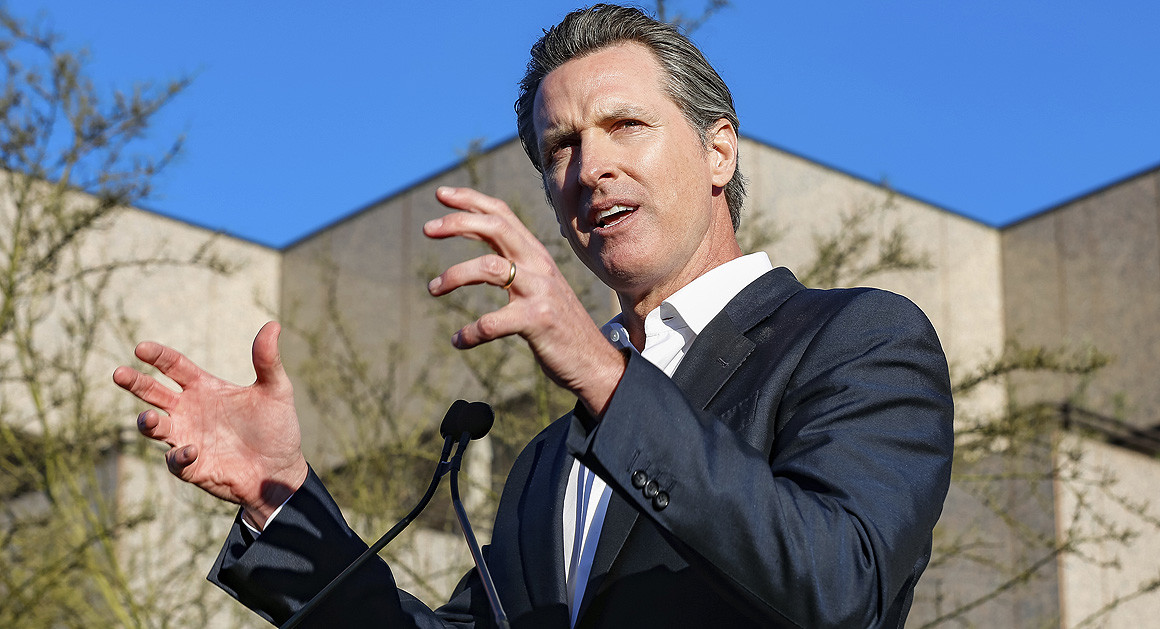By ANGELA HART

Under the plan, each college district could use their state funding to waive fees or expand student programs while continuing to charge students. | Willy Sanjuan/Invision/AP
As part of his broad education blueprint for California, Gov.-elect Gavin Newsom will propose a full two years of free community college in his first budget next week, according to a source close to Newsom with knowledge of the plan.
Newsom will include an additional $40 million in his budget to fund a second year of tuition-free community college, according to a gubernatorial transition document obtained by POLITICO. Full-time students already have the first year waived under a law that took effect this school year at participating campuses.
Free tuition would be available for first-time students enrolled in classes full-time at any of California’s 115 community colleges that choose to waive fees, according to the document. Under the plan, each college district could use their state funding to waive fees or expand student programs while continuing to charge students.
Newsom will also propose an additional $5 million for the California Community Colleges Chancellor’s Office to boost outreach encouraging students to complete a two-year program or transfer to a four-year college.
If community college districts waive fees, the plan would largely benefit middle- and upper-income families, based on past legislative analyses, since the system has long eliminated fees for low-income students.
It builds on the “California College Promise” spearheaded by the state Legislature, which in 2017 passed CA AB19 (17R) that provided state funding to community colleges to cover the first year of tuition for first-time, full-time students. To qualify for the second-year program, colleges are required to meet requirements of the first-year program, which also give districts the flexibility to waive fees or use the money to expand programs.
“The governor-elect is using his first budget to send a powerful message that education is a priority for the state, from early education to adulthood,” said Debbie Cochrane, executive vice president of The Institute for College Access and Success, which advocates for greater resources for community colleges and students. “Students will be better off … California needs to make education a priority to retain its economic strength.”
Several Assembly Democrats have already introduced legislation, CA AB2 (19R), to do just what Newsom is proposing. At $46 a unit, the plan would save at least $552 a semester for those who qualify.
Earlier this week, Newsom unveiled a $1.7 billion early childhood education and development plan that outlines a path to universal preschool and full-day kindergarten, and seeks to fund maternity and prenatal wellness programs for expecting mothers and newborns.
“At the other end of the cradle-to-career spectrum is higher education,” the Newsom budget document reads. It provides yet another glimpse at Newsom’s “California for All” agenda he has outlined in early budget documents.
California Community Colleges Chancellor Eloy Ortiz Oakley said the plan would “give more Californians the opportunity to gain the skills and credentials needed to succeed in today’s economy.”
“This sends a strong message that California is putting students first,” Oakley said.
Beyond his education plan, Newsom’s other major campaign promises include creating a universal health care system and addressing the state’s severe housing affordability crisis. He has vowed to put the state on a path to build 3.5 million homes by 2025 and to expand tenant protections for those facing displacement due to high housing costs.
A Senate analysis in 2017 suggested that the biggest beneficiaries of a fee-waiver program would be middle- and upper-class students who previously paid full freight because low-income students have long had their fees waived. The implication was that lawmakers may want to spend money elsewhere if they want to focus on the most disadvantaged students.
Already, roughly half of the 2.1 million community college students attend tuition-free under a program for low-income students.
But Cochrane noted that districts have the ability to spend their state money on other programs if they find fee waivers a lower priority in their community.
“One of the biggest benefits of the free college program that California passed in 2017, and the governor-elect would build upon, is it allows schools the flexibility to use some of those resources to support students in other ways,” Cochrane said. “The typical California college student still needs to pay thousands — even over $10,000 — for textbooks, transportation and living expenses like food and housing.”
A report by the institute, published Thursday, found low-income community college students receive less financial assistance, and pay more in overall education costs than those who attend the California State University or University of California system, when factoring in the cost of housing, transportation and food.
In November, the California Student Aid Commission voted to ask the Legislature for a massive overhaul of the state’s Cal Grant program for low-income students. They wanted to direct additional aid to living expenses for community college students and broaden eligibility to help non-traditional enrollees who might pursue higher education years after attending high school.
That plan, however, would cost beyond $2 billion. It was a big enough request that it concerned the heads of the University of California and California State University systems, who are seeking their own funding boosts in the upcoming budget.






0 Comments